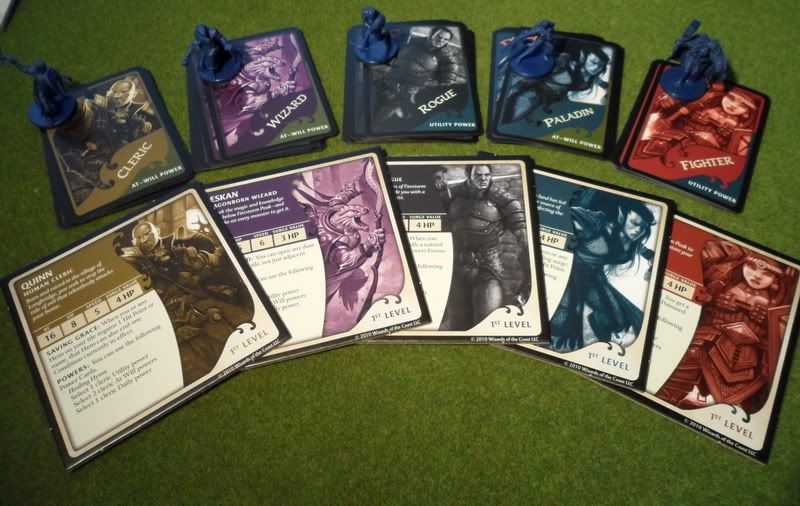
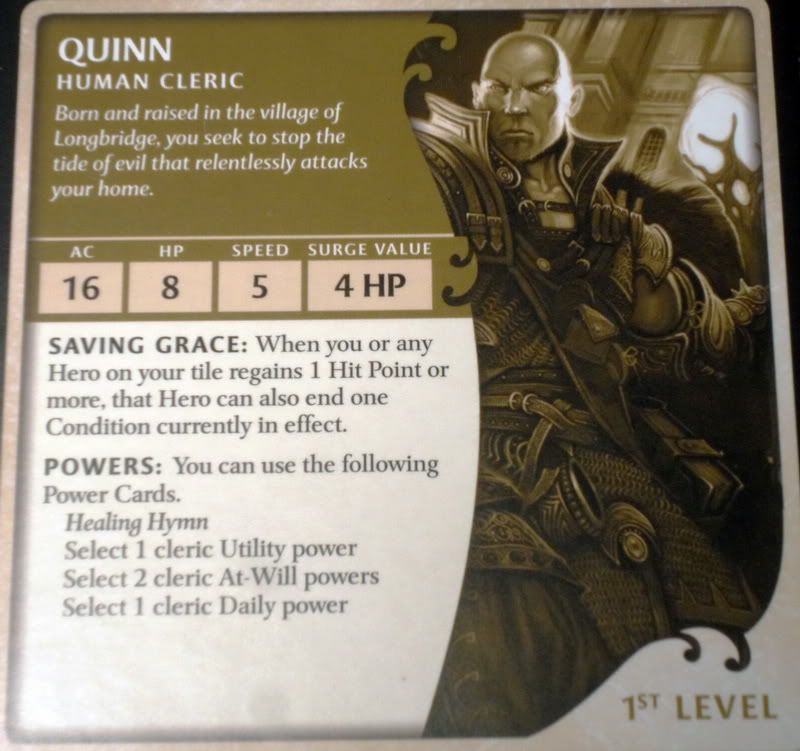 Before I go into the gameplay there are a few things that need to be explained first.
Before I go into the gameplay there are a few things that need to be explained first. This game is a RPG "light" so there is no character creation or heavy customization in this game.
Everything you need to know about your character is condensed into 4 stat lines on your character sheet. Armor Class (how much the enemy has to roll to beat your armor), Health Points, Speed (amount of squares you can move each turn) and "Surge value" (how many hit points you will have when revived midgame). So there are no dexterity/agility/luck rolls or anything like that like in a real D&D RPG. When you level up from lvl1 to lvl2 you flip your character sheet and your stats are somewhat increased for the better.
Each character also has some kind of special rule to them printed on the character sheet.
You are also informed on the number of "Powers" your character has. Powers are a collective term for your attacks and abilities, you always have 2 cards with your basic attacks and 2 cards with "one use only" abilities that are more powerful (although sometimes you are allowed to re-use them). Before the game starts each player is given the appropriate character Power deck and pick the attacks and abilities of his choice up to the maximum card limit printed on the character sheet. You will see that the cards have a value like "6+" printed on them, this means that you add 6 to the D20 roll when you make an attack and the combined value is the strength of the attack.
If you or the enemy roll over the armor class the attack is successful and you remove the appropriate amount of health points or apply some special effect.
The next step is to pick a scenario from the "Adventure book", each scenario have its own victory and failure conditions and more often than not will inform you which special tiles, tokens and card decks you will have to use in order to play the scenario properly. This game comes with a ton of stuff but it is important to know that you don't use it all at once.
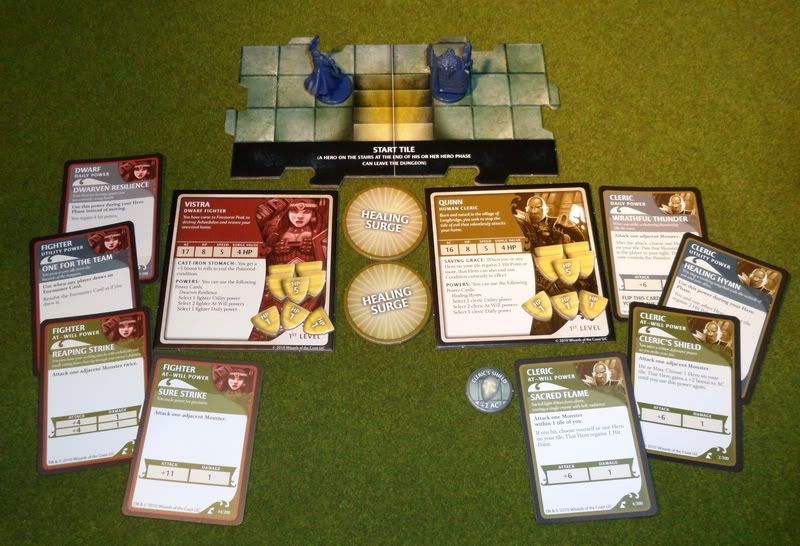
For this review I've picked the 2nd scenario which is a "get to know the rules while playing 2-5 players" scenario. As such it does not include any of the special tiles, which have to be sorted out into their own pile. This scenario only uses "dungeon tiles" so keep those in a separate pile from which you will draw new sections for the dungeon as you explore it.

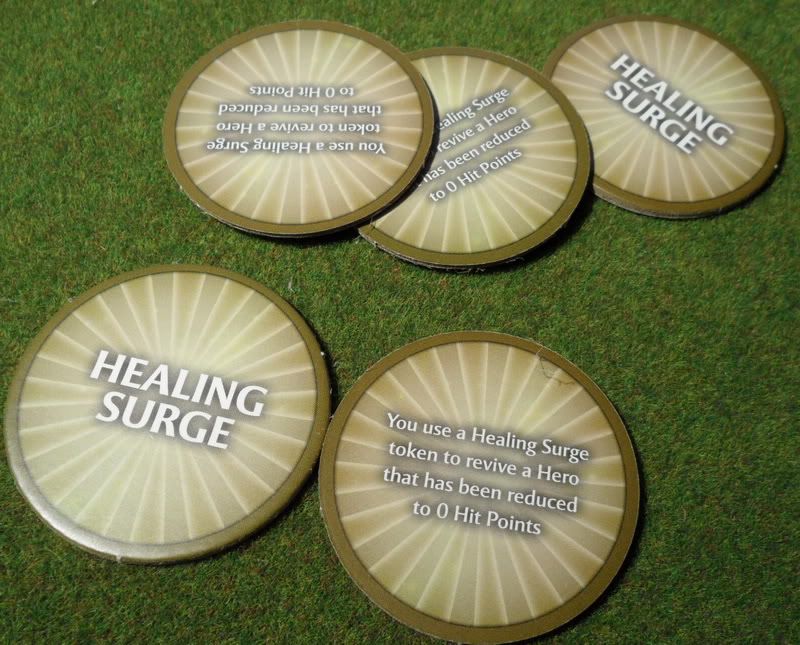 Each scenario has a setup of basic game components, always a starting tile on which your heroes begin their adventure. Your heroes are also given their health point tokens to keep track of their health, you keep the chosen "powers" next to your hero along with any hero specific special tokens that might come in use through the play of a power card. In this case the Cleric Quinn has something called "Clerics shield" among his powers so the Clerics shield token is placed nearby for use in the game. Each hero also draws 1 "Treasure card" (also awarded once per turn when a monster is killed by a player)and keeps it if it has "item" in the title. The items range from healing potions to attack/defensive wargear which will be much needed in order to survive the perils of the dungeon.
Each scenario has a setup of basic game components, always a starting tile on which your heroes begin their adventure. Your heroes are also given their health point tokens to keep track of their health, you keep the chosen "powers" next to your hero along with any hero specific special tokens that might come in use through the play of a power card. In this case the Cleric Quinn has something called "Clerics shield" among his powers so the Clerics shield token is placed nearby for use in the game. Each hero also draws 1 "Treasure card" (also awarded once per turn when a monster is killed by a player)and keeps it if it has "item" in the title. The items range from healing potions to attack/defensive wargear which will be much needed in order to survive the perils of the dungeon.Each adventure also includes something called the "Surge tokens", when a hero is down to 0 health points you discard one surge token and heal that hero up according to his/her surge value. All adventures use 2 surge tokens per default, you can increase or decrease the game difficulty by adjusting the adventure to include anywhere between 0-5 surge tokens. Once a hero is down to 0 health points and there are no more surge tokens to discard the game is lost automatically! This makes selection of characters (when you play less than 5 heroes at one time) and picking the right powers important as heroes can heal each other and often have some sort of powers or special rules that boost nearby heroes which makes sticking together often a good idea.
The game is rather quick to both set up and get started with. All heroes start according to the setup rules of the picked scenario on the "starting tile". What follows is the sequence of play which is: "Hero phase", "Exploration phase" and "Villain phase".
Hero phase:
In your hero phase you can: Move and then attack, attack and then move, move twice.
This is the phase where your heroes combat monsters, try to unlock doors and use special abilities. When your hero ends his/her movement next to an "unexplored" edge you proceed to the "exploration phase".
Exploration phase:
When a hero ends his movement or simply declares he is done with his turn, and stands next to a unexplored edge he must draw a new dungeon tile from the stack and place is so that the arrow on the new tile points towards the hero.
What happens now is that you either draw one tile with a black or a white printed arrow. If you draw a tile with a white arrow the area is deemed "safe" and you get away with just drawing a monster card to determine which monster appears on the new tile. Place the monster on the scorch mark. If there is a door icon on the new tile then you pick a random door token and place it on the tile to form a barrier for the heroes.
If you however draw a dungeon tile with a black arrow, the area is dangerous, and you first draw and resolve an "encounter card". Encounters are pretty much 95% bad for the heroes, these cards may trigger harmful events, reveal traps or even sometimes spawn the red dragon - Ashardalon himself! Once you resolved the encounter card you draw a monster card and place the monster on the scorch mark.
Villain phase:
To make things more difficult for the adventurers, and to encourage them to move onwards, the game also requires a hero that did NOT explore a new dungeon tile to draw an encounter card at the end of his turn and resolve it.
Other than that, the villain phase is dominated by monsters attacking the heroes. Something that is important to remember in this game is that the hero that discovered a trap or a monster places the trap/monster card next to himself. Those monsters and traps will activate only at the end of that particular heroes’ turn. This gives the other heroes a bit more time to kill some monsters before they have the chance to re-activate.
Killed monsters are always worth experience points, and the players share the experience pool of killed monster cards. The killed monsters can be used to level up at the cost of 5 experience whenever a hero rolls a 20 on the D20 - or - use 5 experience worth of killed monsters to cancel the drawn Encounter card. When a hero kills a monster during his turn (but only once per turn) he is also awarded a treasure card.
This would of course also be a bit too easy for the heroes in the long run, so, when multiple heroes have the same type of monster card next to his character that type of monster will activate at the end of each of those heroes’ turn! This will make it important to focus on killing specific monsters first unless you want to get overwhelmed. Monsters and traps are activated in a specific turn as well, you have to place the monster/trap cards in a manner so you can keep track of which to activate first and then play through them in one sequence from first to last as this might be important..........................................
And that is pretty much how Wrath of Ashardalon plays, heroes explore the dungeon in pursuit of a specific dungeon tile to appear, in order to find something or someone or simply to achieve a kill count of monsters. Boss monsters, adventure cards, boon cards, chamber cards and lots of tokens are specifically used with scenarios in the Adventure book. Sometimes a boss monster will be drawn at random, sometimes you will know what boss monster you will be facing at the end of the road.
The game is easy to get into, easy to play, fast paced and the scenarios take approximately 45-90 minutes to resolve depending on the amount of heroes you are using. This game can be played solo by one person controlling multiple heroes - and having tried it out I can say it works and is rather fun BUT also a lot to keep track off by yourself. I think playing this game with 3+ heroes at once is the way to go since that will give you more characters to attack monsters with and monster cards will be divided among a larger group of players making them attack less frequently. On the other hand, the more players you have the more "Encounter cards" you will be drawing thus the game balances itself out that way.
..................
A few comments on the rulebook:
The rulebook is written pretty clear but does miss out on explaining a couple of things. Some of them may be intentional other may have been simply overlooked.
Leveling up, when you level up you flip your character sheet. But it does not say whether or not you heal up to full health. This may have been left out on purpose with the campaign adventures in mind where you heal up to full health between the games. As such I don't think you should heal full health midgame when playing a confined adventure - but you could do it as a house rule if you like.
Monsters/Traps and doors, again something that has been left out. I've checked the internet and most people tend to play with a house rule that treats the door as a wall until it is opened, preventing monsters and traps to move through. However, the game uses a pretty abstract way of resolving monster movement and how traps work. Thus I really think that monsters and traps move through doors without problem. If you think this sucks simply implement the above stated house rule to make doors solid walls until opened.
Dungeon tiles revealed by monsters, the wording is heroes exploring dungeon tiles draw an encounter card if needed. Thus tiles explored by monsters only place the monster on the tile and leave out the encounter. Easy to overlook but pretty important to keep in mind as you don't want more encounter cards than you absolutely have to!
There is also a FAQ of a few other minor things here: http://wizards.custhelp.com/app/answers/detail/a_id/2096/kw/ashardalon
.....................
The adventure book includes 13 scenarios, 2 of them being "campaign mode" adventures where heroes get to keep their loot and leveled up heroes as they progress. The variation is excellent and it is not hard to think of your own ways to come up with scenarios once you've played them all through especially with the amount of components included with the game.
This game is also compatible with Castle Ravenloft and the upcoming Legends of Drizzt (which I'm super excited about). And I really think adding the later will be the more interesting choice since the 3rd installment will include completely new type of tiles and game mechanics that are not included in any of the previous titles. Not to mention new monsters and heroes!
I'm also sure that any D&D rpg fan could use the components of this game for their RPG adventures, especially the tiles and monster models.
A highly recommended "adventure" game and "RPG light" for anyone who likes fantasy but have too much of a time restriction to get into the hardcore RPG games such as Dungeon & Dragons which require a game "dungeon master".
You can get this game over at GameManiacs
Pictures of remaining game components:
A couple of "game-in-progress" pictures:


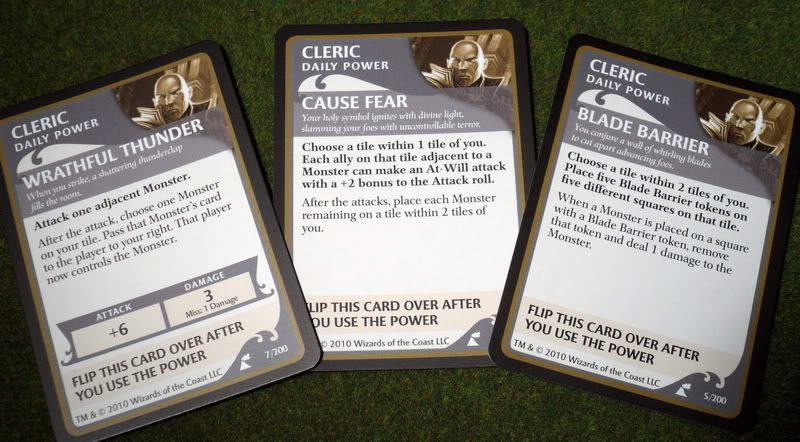
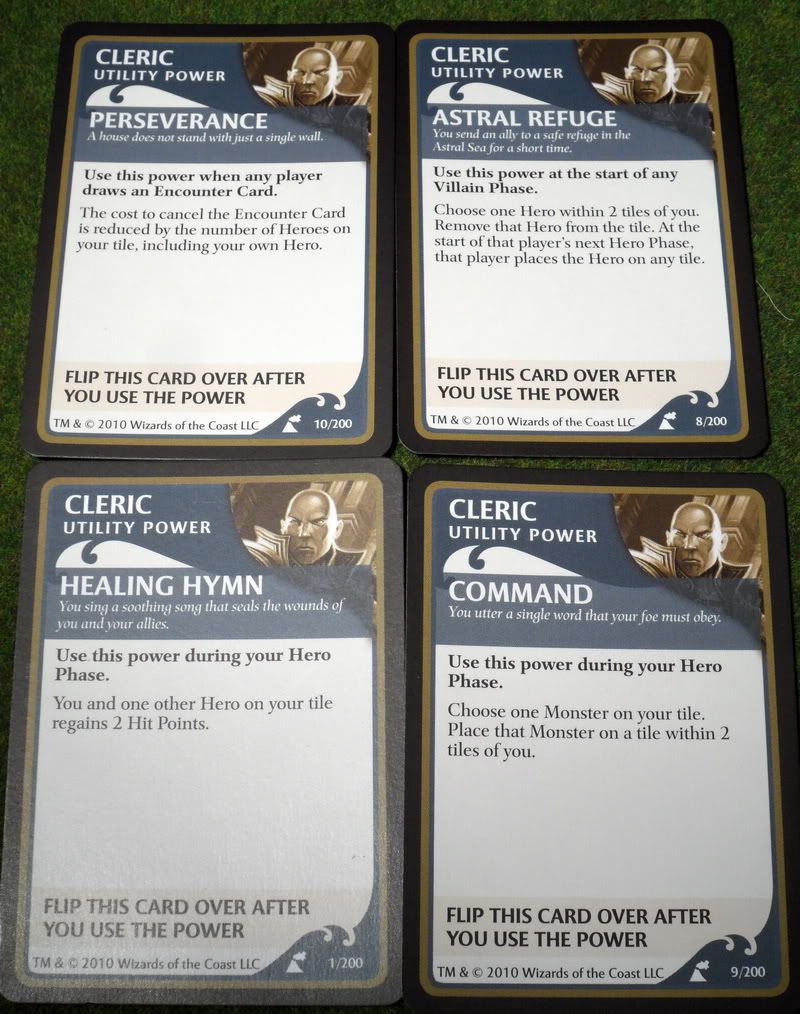
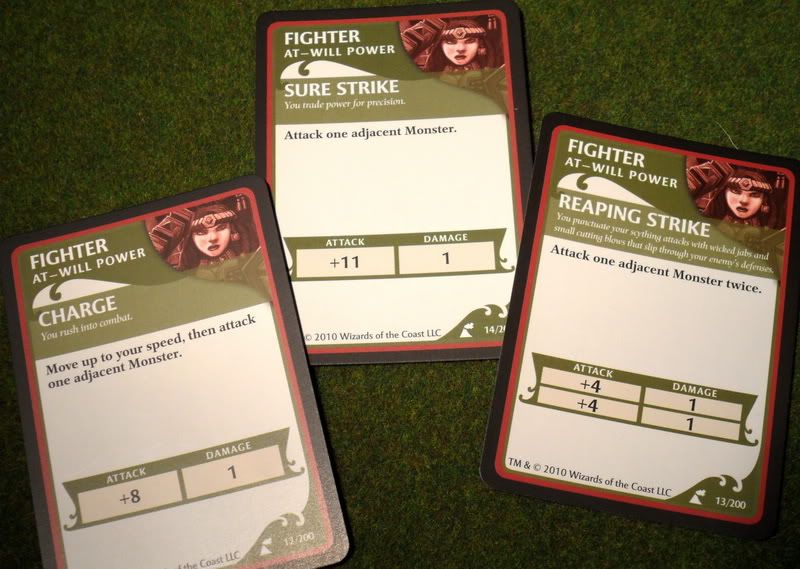
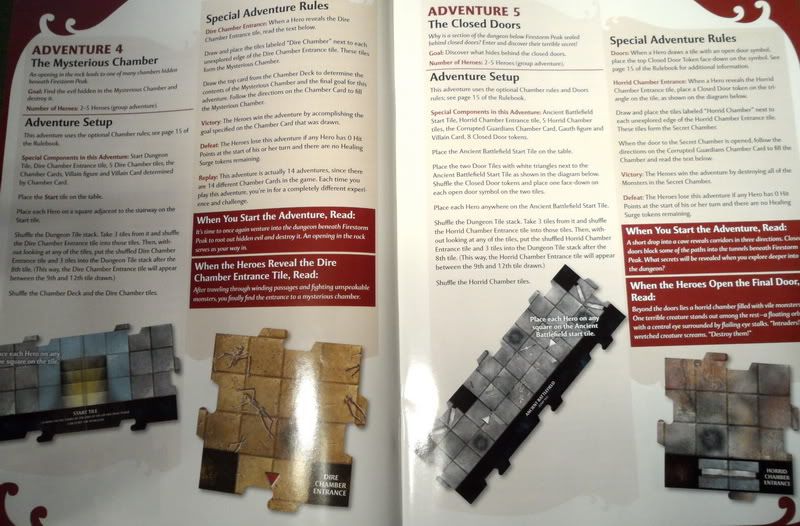


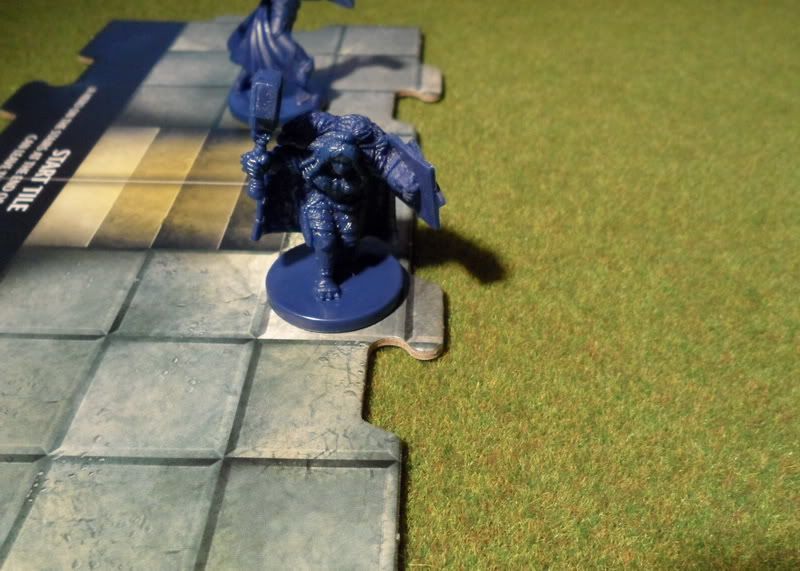

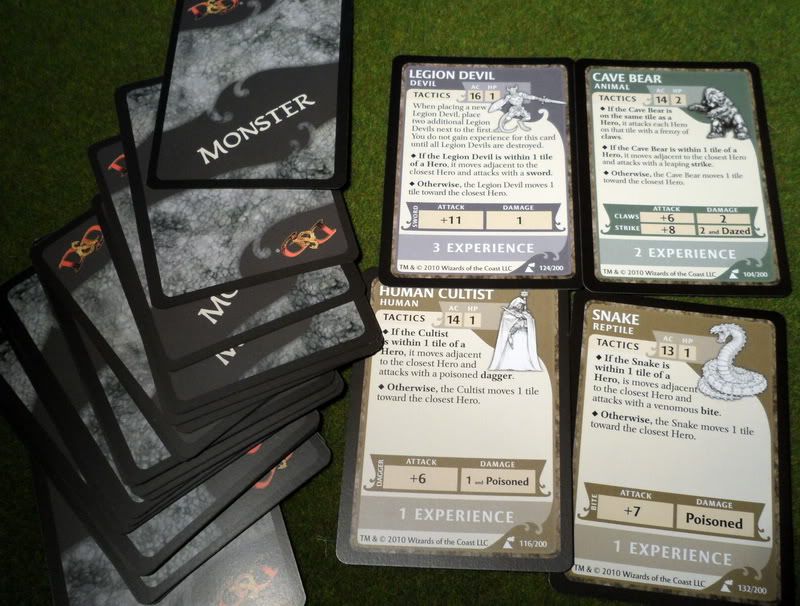
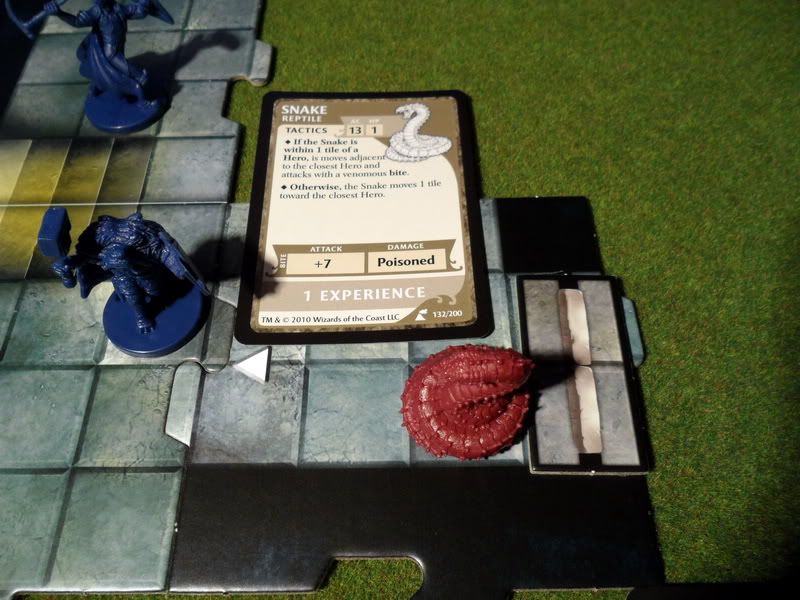
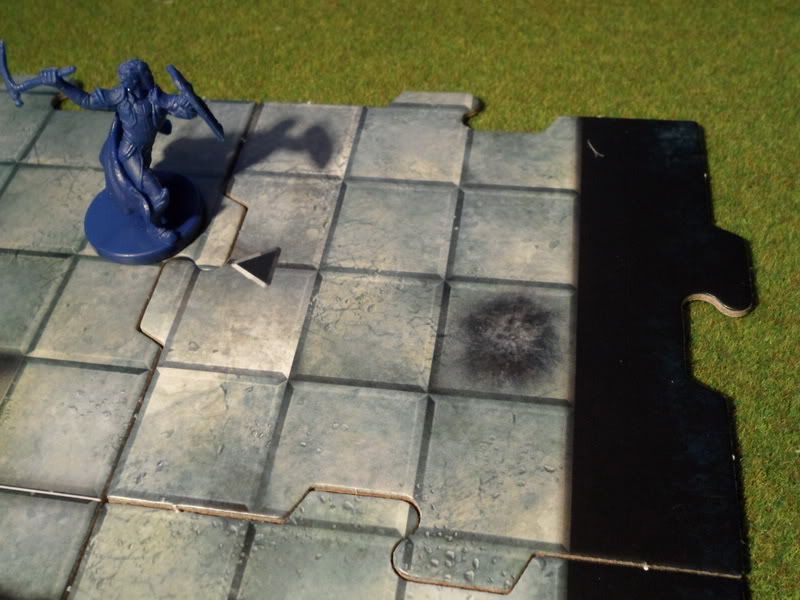

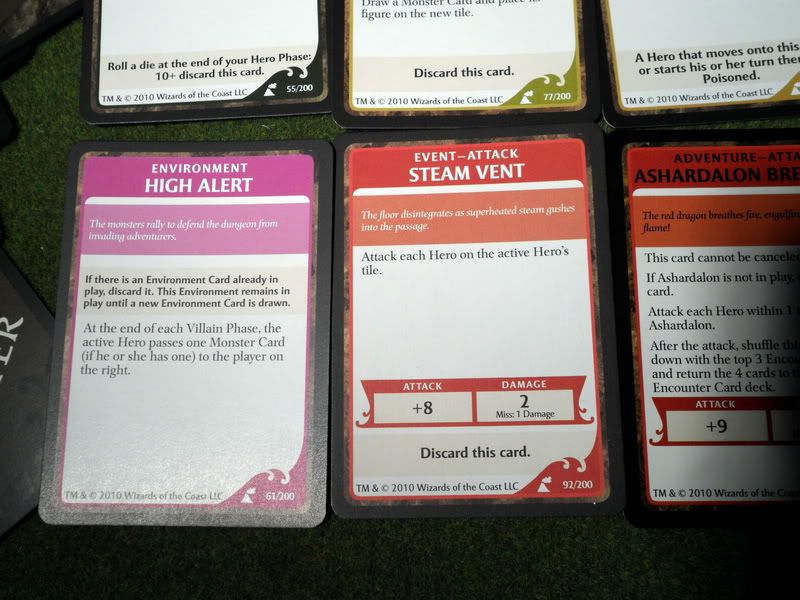
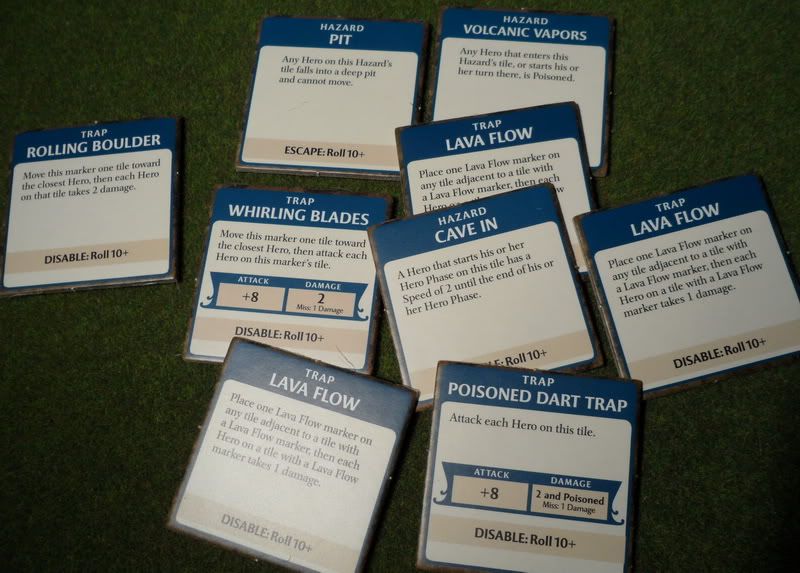

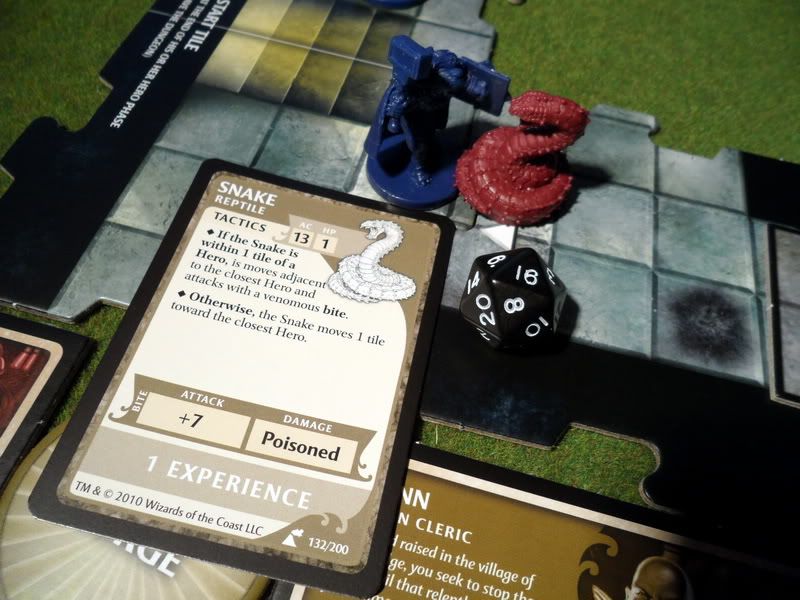
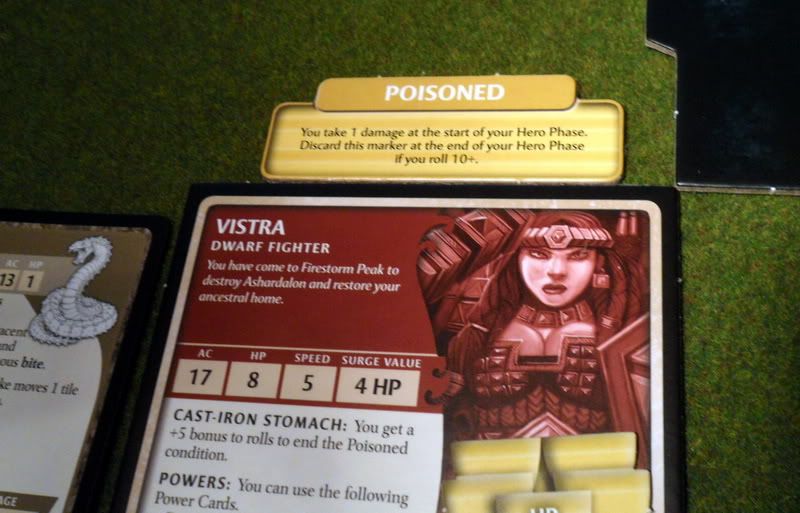
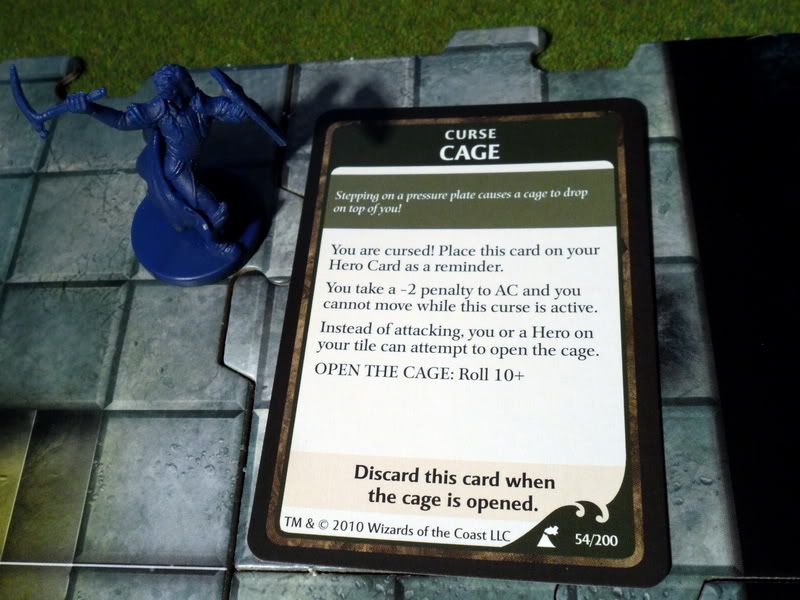
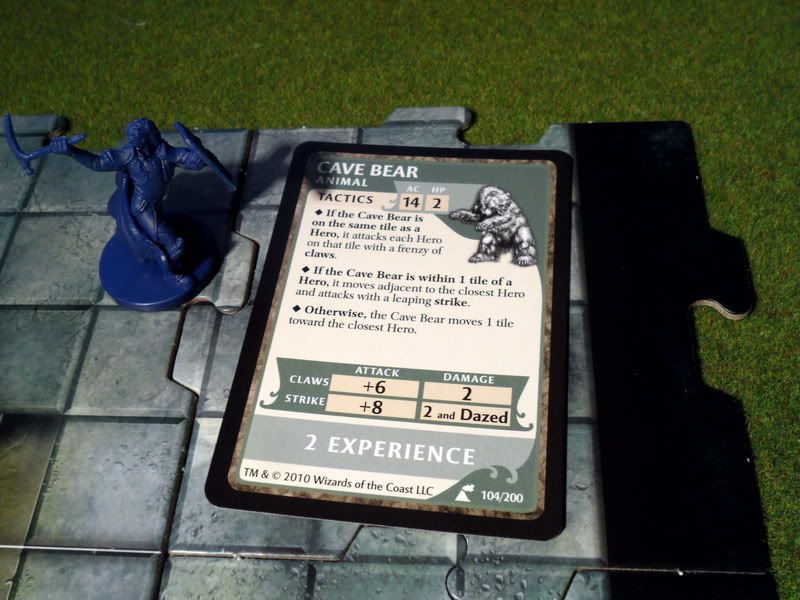

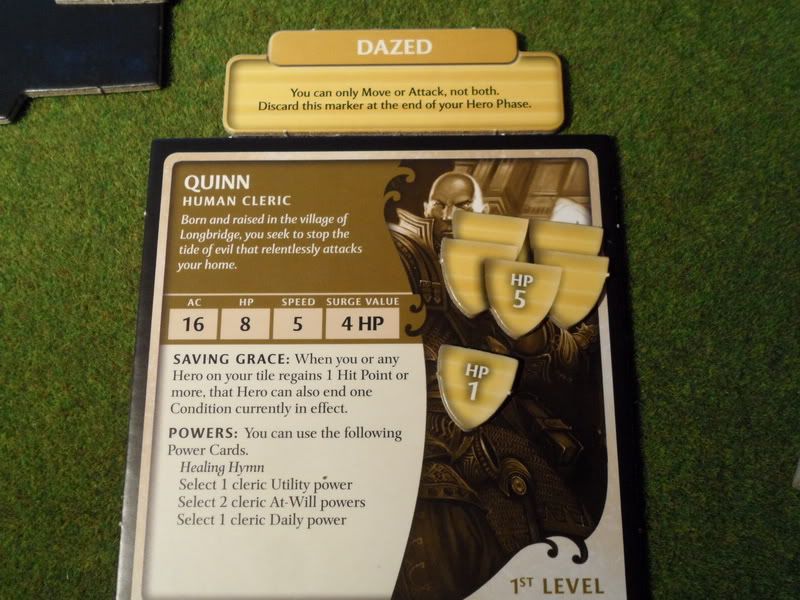
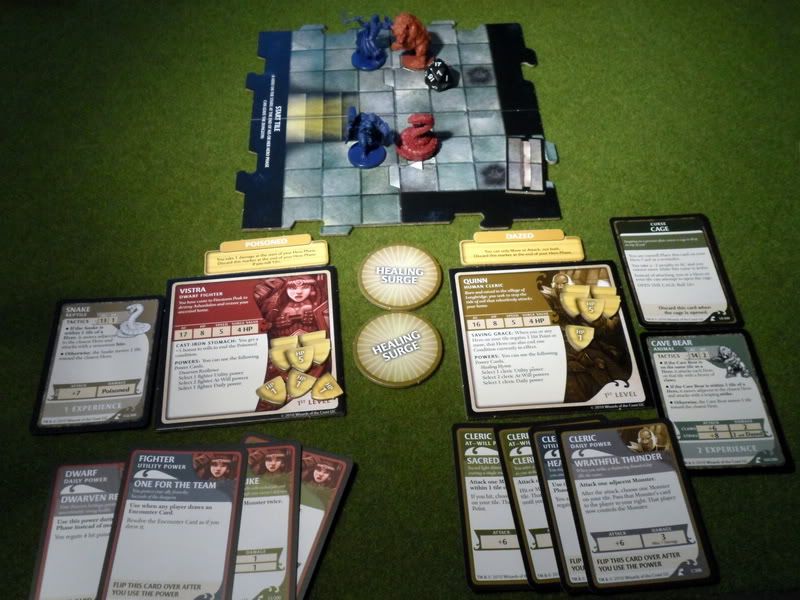
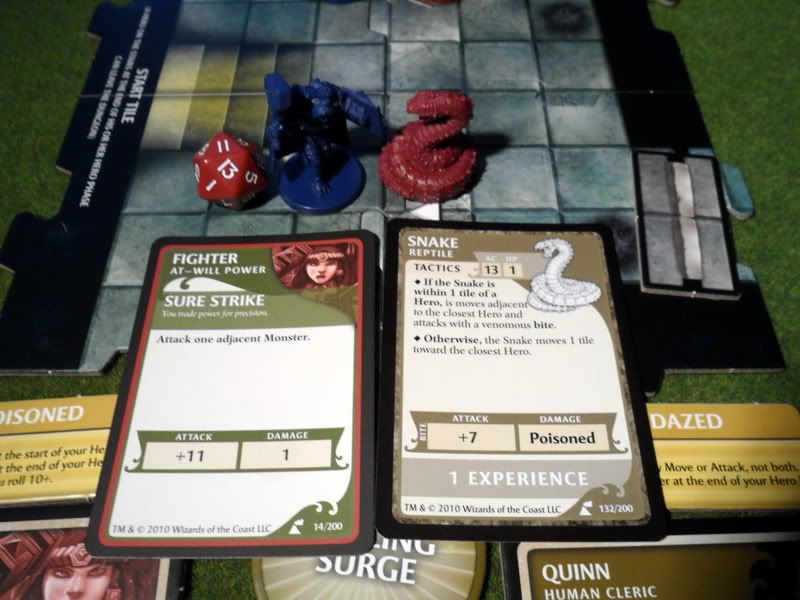
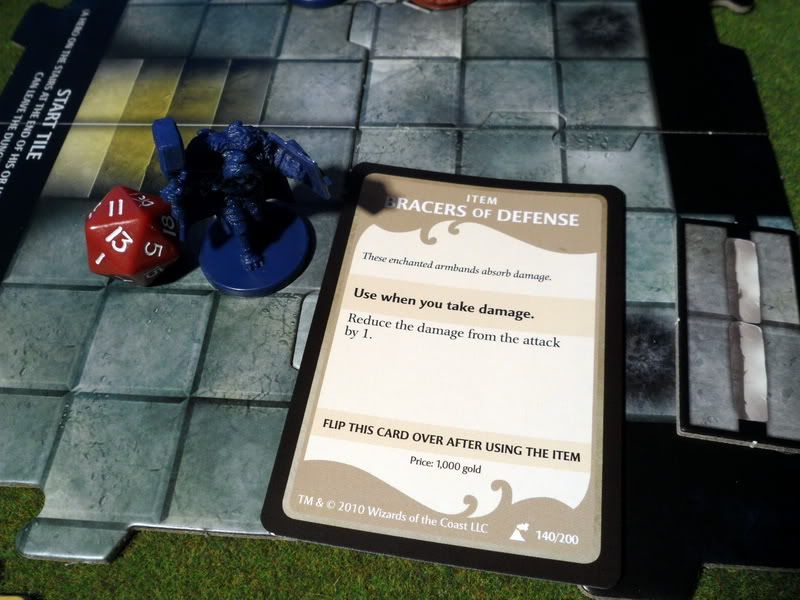
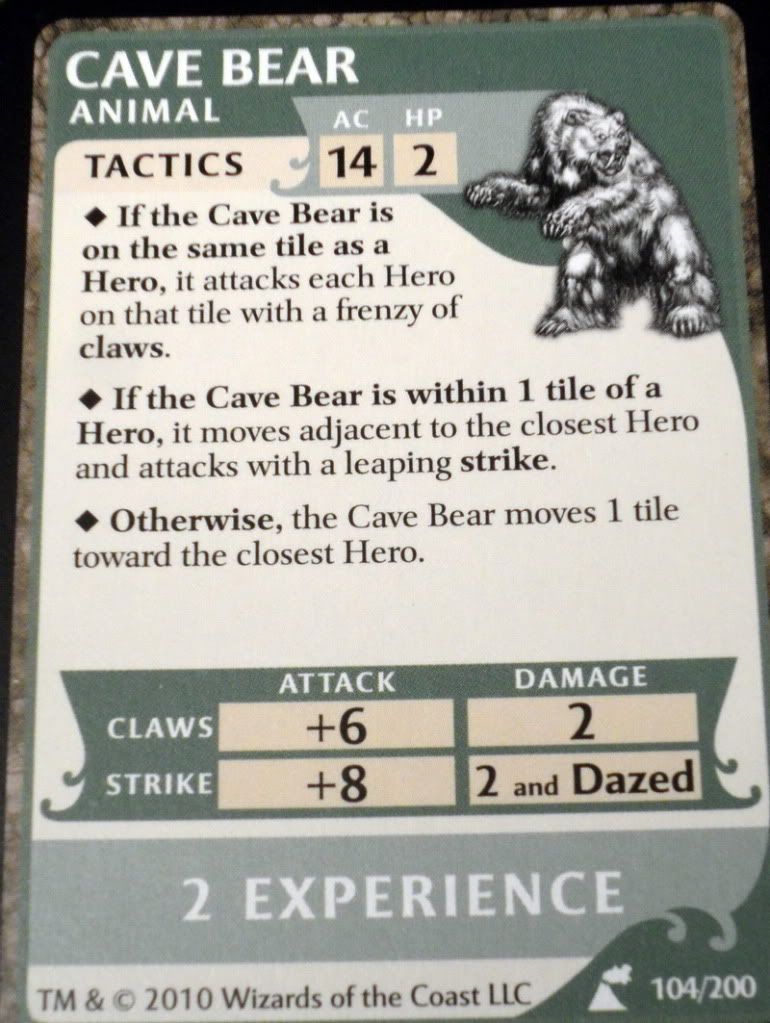
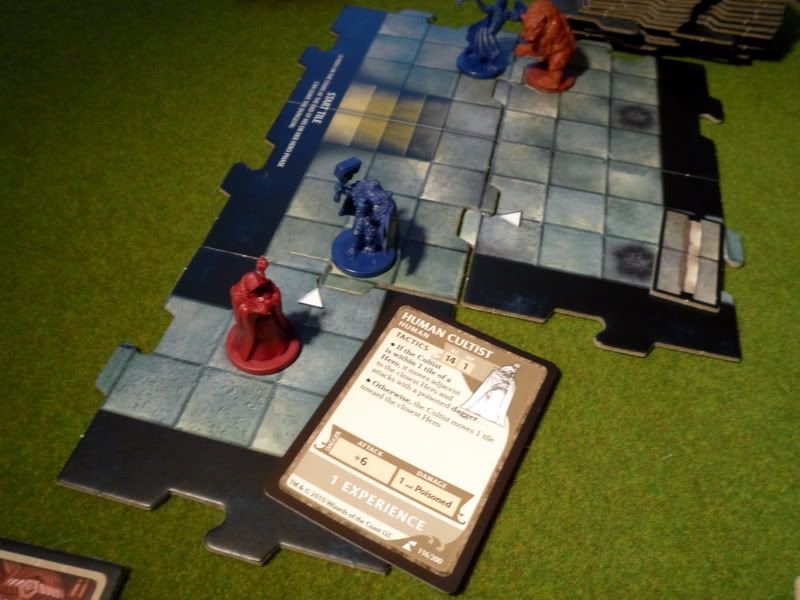

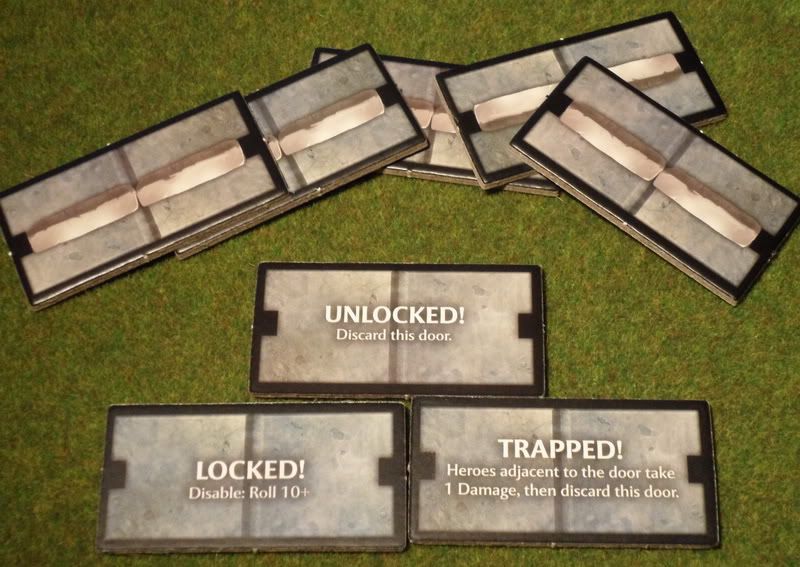
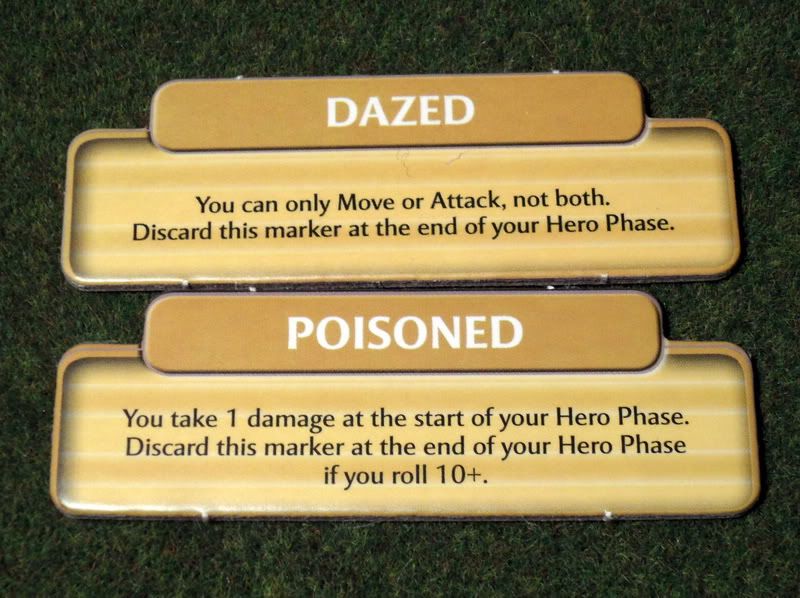
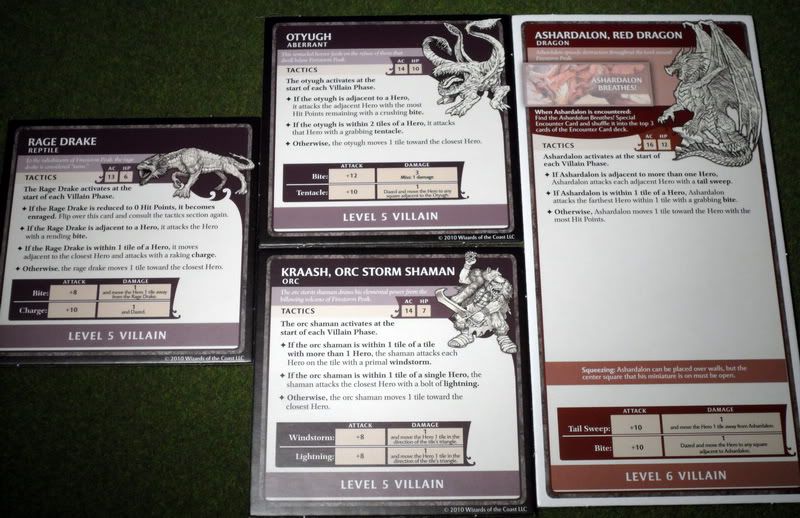


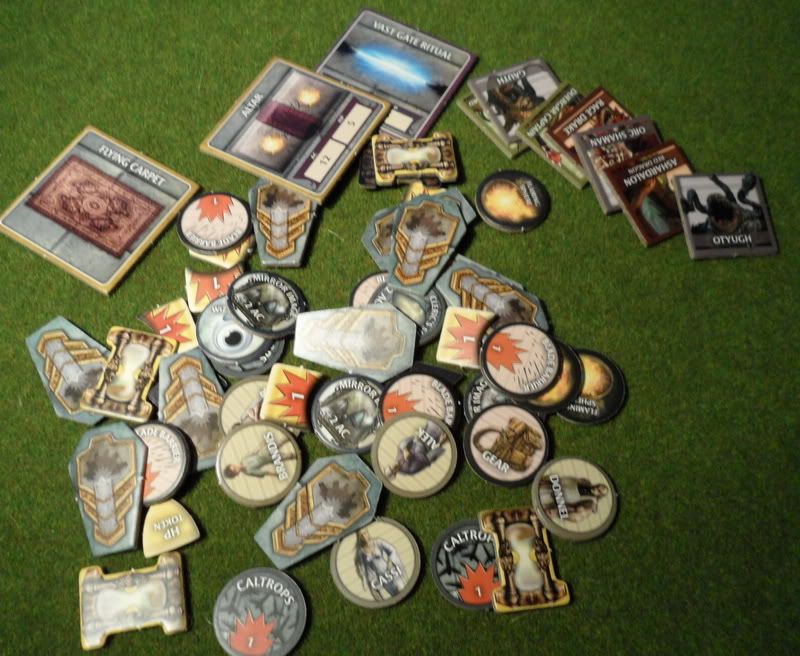


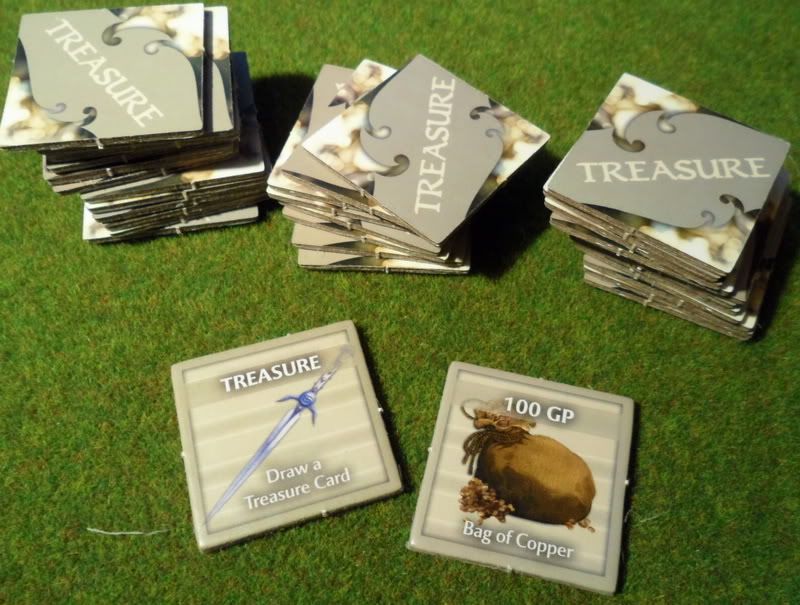





No comments:
Post a Comment